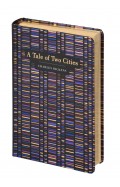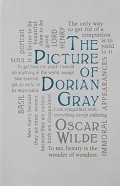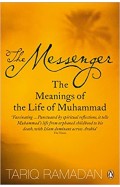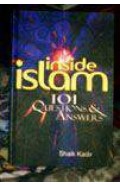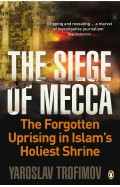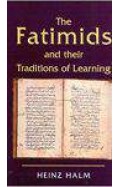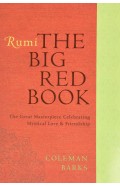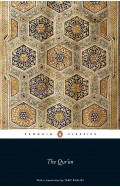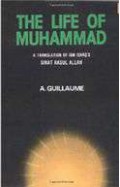- Home
- Books
- Categories
- Non Fiction
- Education and Reference
- Family Law in Islam - Theory and Application
Family Law in Islam - Theory and Application
By: Dr Muhammad Tahir Mansoori
-
Rs 480.00
- Rs 600.00
- 20%
You save Rs 120.00.
Due to constant currency fluctuation, prices are subject to change with or without notice.
The present book is a systematic exposition of Shari’ah rules of Muslim marriage contract on which family organization is structured. It explains legal injunctions on important issues of marital relations and family organization. The book explores and investigates the ideals and precepts on marriage and divorce both in classical jurisprudence as well as in the modern legal codes of personal status of Muslim countries. The book also highlights areas of tension between the classical jurisprudence and the modern legislation on a number of
issues of Islamic Family Law. Although the focus of the book is primarily on the traditional law of Islam as explained and interpreted by the early jurists, nevertheless, it also examines modern legislation in the sphere of family law to offer points of comparison and contrast between the theory and practice. It is hoped that the present study will not only make an important contribution to the field but will generate much interest among scholars to analyze and further develop the ideas presented in the book
The present book is a systematic exposition of Shari’ah rules of Muslim marriage contract on which family organization is structured. It explains legal injunctions on important issues of marital relations and family organization. The book explores and investigates the ideals and precepts on marriage and divorce both in classical jurisprudence as well as in the modern legal codes of personal status of Muslim countries. The book also highlights areas of tension between the classical jurisprudence and the modern legislation on a number of
issues of Islamic Family Law. Although the focus of the book is primarily on the traditional law of Islam as explained and interpreted by the early jurists, nevertheless, it also examines modern legislation in the sphere of family law to offer points of comparison and contrast between the theory and practice. It is hoped that the present study will not only make an important contribution to the field but will generate much interest among scholars to analyze and further develop the ideas presented in the book
Islamic Law of Contract - Applications in Islamic Finance
By: Dr Muhammad Tahir Mansoori
Rs 1,200.00 Rs 1,500.00 Ex Tax :Rs 1,200.00
Family Law in Islam - Theory and Application
By: Dr Muhammad Tahir Mansoori
Rs 480.00 Rs 600.00 Ex Tax :Rs 480.00
Islamic Law of Contract: Applications in Islamic Finance
By: Dr Muhammad Tahir Mansoori
Rs 1,500.00 Ex Tax :Rs 1,500.00
Zubin Mehta: A Musical Journey (An Authorized Biography)
By: VOID - Bakhtiar K. Dadabhoy
Rs 472.50 Rs 1,050.00 Ex Tax :Rs 472.50
Islamic Law of Contract - Applications in Islamic Finance
By: Dr Muhammad Tahir Mansoori
Rs 1,200.00 Rs 1,500.00 Ex Tax :Rs 1,200.00
Chiltern Classic A Tale of Two Cities
By: Charles Dickens
Rs 5,845.50 Rs 6,495.00 Ex Tax :Rs 5,845.50
The Pakistan Lawyers' Movement: An unfinished agenda
By: Muneer A. Malik
Rs 595.00 Ex Tax :Rs 595.00
The Messenger: The Meanings of the Life of Muhammad
By: Tariq Ramadan
Rs 2,335.50 Rs 2,595.00 Ex Tax :Rs 2,335.50
Rumi :The Big Red Book The Great Masterpiece Celebrating Mystical Love And Friendship -
By: Coleman Barks
Rs 2,425.50 Rs 2,695.00 Ex Tax :Rs 2,425.50
Islamic Law of Contract - Applications in Islamic Finance
By: Dr Muhammad Tahir Mansoori
Rs 1,200.00 Rs 1,500.00 Ex Tax :Rs 1,200.00
Chiltern Classic A Tale of Two Cities
By: Charles Dickens
Rs 5,845.50 Rs 6,495.00 Ex Tax :Rs 5,845.50
The Pakistan Lawyers' Movement: An unfinished agenda
By: Muneer A. Malik
Rs 595.00 Ex Tax :Rs 595.00
No recently viewed books available at the moment.
Zubin Mehta: A Musical Journey (An Authorized Biography)
By: VOID - Bakhtiar K. Dadabhoy
Rs 472.50 Rs 1,050.00 Ex Tax :Rs 472.50
Islamic Law of Contract - Applications in Islamic Finance
By: Dr Muhammad Tahir Mansoori
Rs 1,200.00 Rs 1,500.00 Ex Tax :Rs 1,200.00
Family Law in Islam - Theory and Application
By: Dr Muhammad Tahir Mansoori
Rs 480.00 Rs 600.00 Ex Tax :Rs 480.00
Islamic Law of Contract: Applications in Islamic Finance
By: Dr Muhammad Tahir Mansoori
Rs 1,500.00 Ex Tax :Rs 1,500.00
Islamic Law of Contract - Applications in Islamic Finance
By: Dr Muhammad Tahir Mansoori
Rs 1,200.00 Rs 1,500.00 Ex Tax :Rs 1,200.00
Chiltern Classic A Tale of Two Cities
By: Charles Dickens
Rs 5,845.50 Rs 6,495.00 Ex Tax :Rs 5,845.50
The Pakistan Lawyers' Movement: An unfinished agenda
By: Muneer A. Malik
Rs 595.00 Ex Tax :Rs 595.00













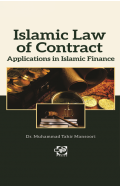
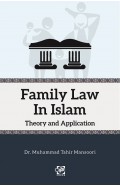

-120x187.jpg?q6)





